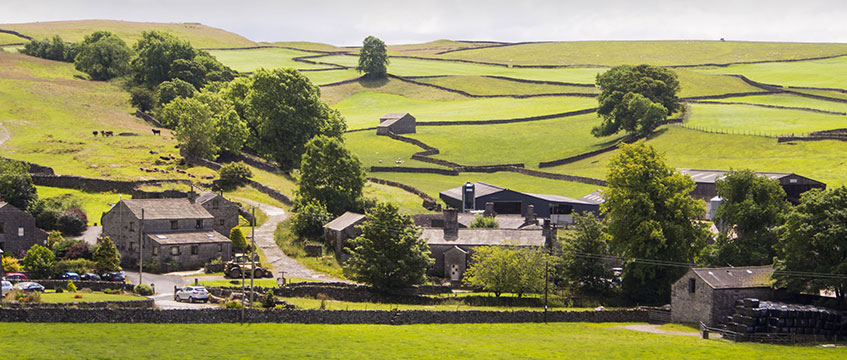The Supreme Court prefaced its eagerly awaited decision in the conjoined appeals in R (on the application of Lancashire County Council) v Secretary of State for the Environment, Food and Rural Affairs and R (on the application of NHS Property Services Ltd) v Surrey County Council [2019] UKSC 58; [2019] PLSCS 234 with a review of the “unconventional process by which the concept of a modern green became part of our law”.
After summarising the authorities, Lord Carnwath suggested that, whatever misgivings there may be about the way in which the law on town and village greens has developed, “the emphasis now should be on consolidation, not innovation”, and on respecting the established balance between the interests of landowners and users claiming recreational rights over land.
The litigation revolved around a point of law that emerged from an earlier decision of the Supreme Court in R (on the application of Newhaven Port & Properties Ltd) v East Sussex County Council [2015] UKSC 7; [2015] PLSCS. In that case, the Supreme Court ruled that section 15 of the Commons Act 2006, which enables land to be registered as a town or village green (TVG), did not apply to a working harbour held by the port authority for specific statutory purposes that were incompatible with use as a green.
However, in Lancashire and Surrey, the Court of Appeal warned that the concept of statutory incompatibility must be applied “with care and only when the need to do so truly arises”.
That warning, combined with Lord Carnwath’s emphasis on “consolidation”, might have suggested that the Supreme Court’s decision in Lancashire and Surrey would be relatively uncontroversial. But the decision extends the principle of statutory incompatibility so widely that Lady Arden expressed the opinion that the Supreme Court was introducing, for the benefit of public authorities, a blanket exemption from the TVG regime that was not expressly enacted by parliament.
Statutory incompatibility
The landowners were public bodies that owned land in Lancashire and Surrey. Their parcels of land adjoined a school and hospital respectively, and had been registered as greens. The Court of Appeal upheld the registrations, rejecting arguments that the statutory regimes relating to education and health services, under which the land was held, were incompatible with the TVG regime.
The Court of Appeal distinguished Newhaven, contrasting the specific statutes that governed the use of Newhaven Harbour with the legislation that applies to land held by education and health authorities. The court explained that the authorities were not under any statutory obligation to maintain or use their properties in a particular way, or to carry out any specific activities on them, and ruled that, even though it might be more difficult, they could perform their statutory duties without recourse to the land. Therefore, registration as a green would not, in itself, have any material effect on their statutory functions.
Both authorities appealed to the Supreme Court. Consequently, it had to decide whether a public body can defeat an application to register land as a TVG if it can show that registration would be incompatible with the statutory purposes for which land is held, even though such purposes may be general in character.
Statutory construction
Lord Carnwath, Lord Sales and Lady Black did not believe that the Commons Act 2006 was intended to frustrate important public interests expressed in statutory powers, by preventing land from being used for the statutory purposes to which it is dedicated.
They agreed that the court must compare the statutory purposes for which land is held with the TVG regime, ruling that the test was not whether land has been allocated by statute itself for particular statutory purposes, but whether it has been acquired for such purposes (compulsorily or by agreement) and is for the time being so held.
Furthermore, the issue is simply one of statutory incompatibility, which must be decided by statutory construction. Therefore, the point must be decided as a matter of principle and not by reference to how the land is being used at any particular point in time (or might be used in the future). In other words (to paraphrase Lady Arden), the issue of incompatibility is a “desktop exercise” that does not involve a practical inquiry into the facts on the ground.
The education authority in Lancashire had a duty to safeguard children and the rights claimed pursuant to the registration of its land as a green were incompatible with use of the land for education purposes, whether for the construction of new school buildings or as playing fields. And, in Surrey, it would not be feasible to use the land belonging to the health authority for statutory healthcare purposes if it were to be registered as a green. Consequently, the majority ruled that neither of the registrations should be allowed to stand.
Minority views
Lord Wilson flatly disagreed with the majority. He did not subscribe to Lord Carnwath’s claim that the decision represented nothing more than “consolidation of the law” and counselled against interpreting the exception to the TVG regime in Newhaven too widely, lest the exception became the rule and the rule became the exception.
By contrast, Lady Arden would have based the decision on whether registration would be inconsistent with any existing or reasonably foreseeable future use of the land pursuant to the relevant statutory powers. Given the widely opposing views expressed, and the possibility that public authorities may try to undo some registrations as a result of this decision, it is safe to suggest that we have not heard the last on this subject just yet.
Allyson Colby is a property law consultant









